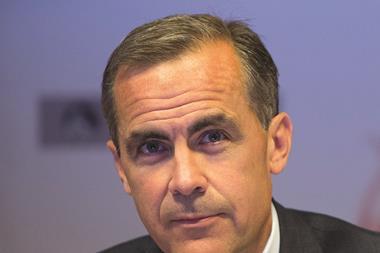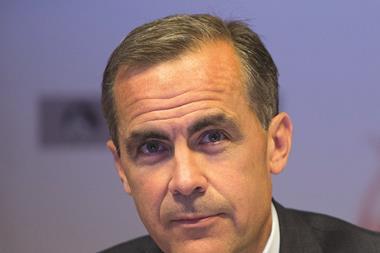While Neymar and Oscar were playing keepie uppie in Brazil, Mark Carney and George Osborne looked as if they were attempting to play keepie downie with house prices in London. Do they think it’s all over?
For many of the players in London’s housing market, it is now. Even before the governor of the Bank of England and chancellor performed a devastating one-two in their Mansion House speeches — threatening early rate rises and tougher regulation of lending — it looked as though many speculators in the capital were heading for the exits.
The Rightmove survey for the month to mid-June reported “a surge of more than 20% more sellers rushing to market” and a small, but potentially prophetic, 0.5% fall in prices. Maybe they sensed what was coming.
Carney generated almost as many column inches as Brazil’s opener held the same evening when he declared that a rate rise “could happen sooner than markets currently expect”. The decision among Monetary Policy Committee members as to when to raise “is becoming more balanced”. Like his former US counterpart Ben Bernanke, every word has potential significance. Note how long he lingered on and stressed the word “is” for the cameras.
Present tense, here and now. Speculation on the likely date shifted sharply from 2015 to November and then to October, putting further upwards pressure on sterling.
This somewhat overshadowed Osborne, but what he had to say had potentially far greater repercussions, by offering Carney even greater powers to intervene in the housing market: “If the Bank of England thinks some borrowers are being offered excessive amounts of debt, it can limit the proportion of high loan-to-income mortgages each bank can lend, or even ban all new lending above a specific loan-to-income ratio. And if it really thinks a dangerous housing bubble is developing, it will be able to impose similar caps on loan-to-value ratios — as they do in places like Hong Kong.”
These issues were discussed in hermetically sealed conditions at the 17 June meeting of the Financial Policy Committee, which Carney chairs, and despite intense media scrutiny nothing had been leaked ahead of its report, scheduled to come out yesterday after Property Week went to press.
It is the newly rediscovered emphasis on loans to income that is probably the most significant direction of regulatory thinking. This was once a widespread constraint (I remember the days of “three times salary
and not a penny more”) but became rather déclassé, as the focus switched to the cost of servicing a mortgage and then increasingly sophisticated measures of “stress testing” the ability of borrowers to cope with notional
rate hikes.
Applying income multiples is a much blunter instrument and the two banks in which the government maintains stakes — Lloyds and RBS — have applied a maximum of four times household incomes on loans of more than half a million (implicitly aimed at the London market). Business secretary Vince Cable wants even tighter criteria: “Most of us who have been through housing booms have recognised that a stable level is about three, three-and-a-half times”, he told the Today programme.
Forcing the lenders directly to cap income multiples (rather than encourage them indirectly by, for instance, requiring banks to hold more capital if they were lending on high multiples) is probably a step too far. But should rules be tightened, the Chancellor’s flagship housing policy would also fall within the aegis of the Bank, he stressed: “If the Bank does act in future to limit mortgage lending then the same rules will be applied to every single Help to Buy (H2B) mortgage.” In response to both speeches, housebuilders’ shares suffered the same sort of battering the next day that the Spanish defence would endure that evening against the Dutch, falling as much as 7%.
Tighter loan-to-income ratios for H2B really could hurt the housebuilders. So far, the critics of H2B have suggested the schemes could be curtailed by reducing the upper limit for properties bought under the two schemes from £600,000 to £400,000 or even £300,000. This is a bit of a red herring, since the vast majority of homes they have funded fall below that: a mean price of £208,000 for new homes in England in the latest month under the first phase, compared with £161,100 in England under the second phase available for all homes.
Statistics for the two schemes differ in their methodology and — bizarrely — are published by different departments: the Department for Communities and Local Government (DCLG) for the first and the Treasury for the second. The mean household income is given for the more “controversial” second scheme — £51,200, equating to a healthy 3.1 times ratio.
The mean income is not given for the first scheme, but analysing the income bands provided by the DCLG derives a weighted average of £44,900 — a much steeper 4.6 times ratio.
H2B1 has generated more than 30% of housebuilders’ private sales since its introduction. The Public Accounts Committee this month warned over its concerns. Could Carney be about to blow his whistle on the first scheme’s potential largesse?
Alastair Stewart is building and property analyst at Progressive Equity Research





























No comments yet